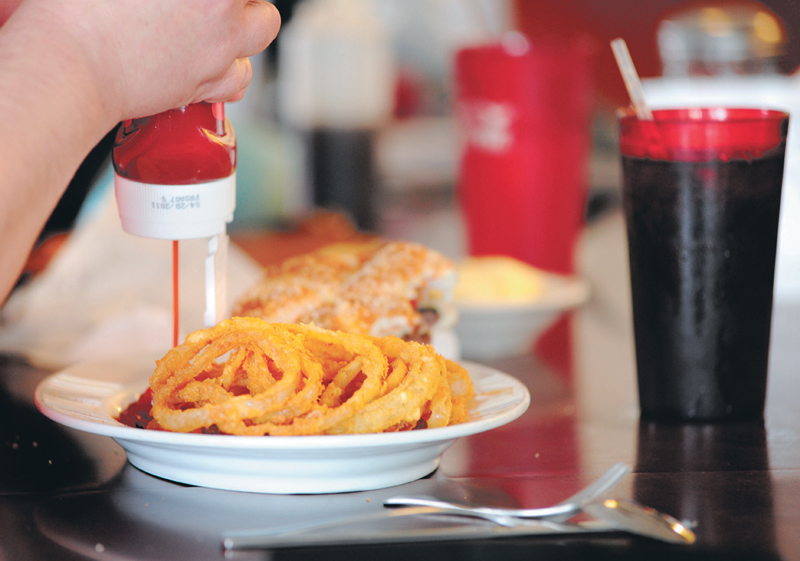It is the most common kitchen artifact in America. It is to be found on the kitchen tables and on red and white checkered picnic blankets of our land.
It comes in bottles of all shapes, and sometimes in tiny plastic cups on the side of diner plates.
Other times, but not often, it can be found in silver cups on the tables of the rich, where it is ladled out in tiny silver spoons. Full disclosure. I once spilled it on a wealthy family’s expensive table cloth. Was it Des Moines linen or Damascus? Can’t remember. I was not invited back.
It’s an organic icon, and even today all these years later, some students have invented a new version to get “the good stuff out faster.” Yeaaaa.
It crosses all economic roads and all across America, and perhaps the world. Welcome National Ketchup Day.
Today ketchup lovers are celebrating the birth of ketchup, and its very first American ketchup creator, Sandy Addison. Yeaaaa! Sandy Addison Day.
Okay, I made up the Ketchup Day thing, but the Sandy Addison thing is true. Sandy printed a recipe for ketchup in an American cookbook, “The Sugar House Book.”
Of course the Chinese, who we already know discovered America and brought chow mein and dim sum to us long before Columbus and his cannoli came ashore, created ketchup. Then, of course, the Brits took it up and smeared it all over their eggs. But it was Sandy Addison who made it famous here. Yeaaaaa, Sandy.
Yes, I know, F&J Heinz gave us what we know today as the best condiment known to man. But of course, they tried to fool around with it and almost shot it down. In October 2000, they introduced EZ Squirt in green, purple, pink, orange and teal. Teal on your fries, anyone? I don’t think so. They gave it up.
Ketchup (or catsup for snobs) changed all of our lives. Like most Americans, I grew up putting ketchup on almost everything. What would french fries be without it? Ketchup is the only answer.
As a boy, home from school hungry, I made ketchup sandwiches by slapping some of the red sauce on pieces of Wonder Bread. Hmmmmm. I can taste it now. Ketchup played a big part in high school romance, by creating the magic moment when I first met Rosemary DeBranco, she of the one thousand and one pastel colored angora sweaters and simple strand of pearls.
Rosemary was sitting at one of the counters at the Velvet Freeze on Grand Avenue, where the streetcar turned. She was sipping a Coke with friends when she spotted me, a fetching, darling, dark-haired boy at the other end, about to enjoy a paper plate of fries.
Rosemary hipped her way down the counter to my side and without asking, took two of my fries, dipped them in my ketchup and held them to my lips. Her eyes spoke of passion yet to come. Her lips spoke of Heinz. Love bloomed.
Throughout my life, ketchup played an important and valuable economical role. Every New York actor of a certain age remembers the early hungry days when a plop of ketchup transformed a cup of hot diner water into soup.
Broadway actors remember a chain of cut-rate Italian restaurants where one could get a bowl of spaghetti for fifty cents, with a meager shake of parmesan cheese. Sauce was twenty-five cents extra. It was the great American actress, Geraldine Page, who taught me to use the ketchup bottle. Voila! Pasta with sauce. After a while, it caught on with starving artists everywhere. In due time the owners removed the ketchup bottles from the table.
Today, Mitt and Barack are dueling across the nation. The Middle East is in flames, Spain is having a nervous breakdown, and “Mad Men” was spurned by the Emmys. But somewhere tonight when a bowl of mac and cheese is offered, or a plate of fries, or scrambled eggs is put on the table, someone will look passionately into someone’s eyes and whisper, “Pass the ketchup?”
J.P. Devine is a Waterville writer.
Send questions/comments to the editors.




Comments are no longer available on this story